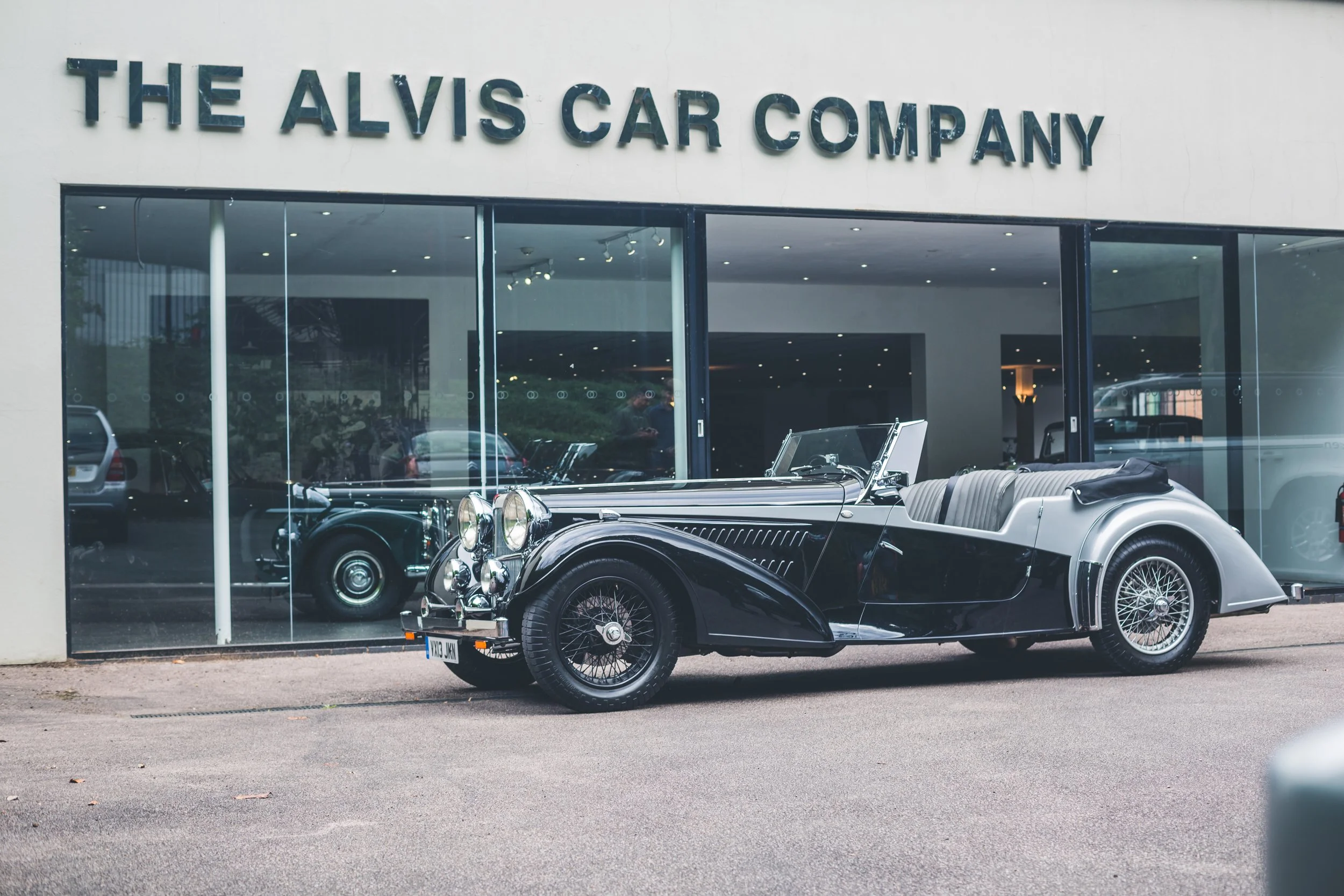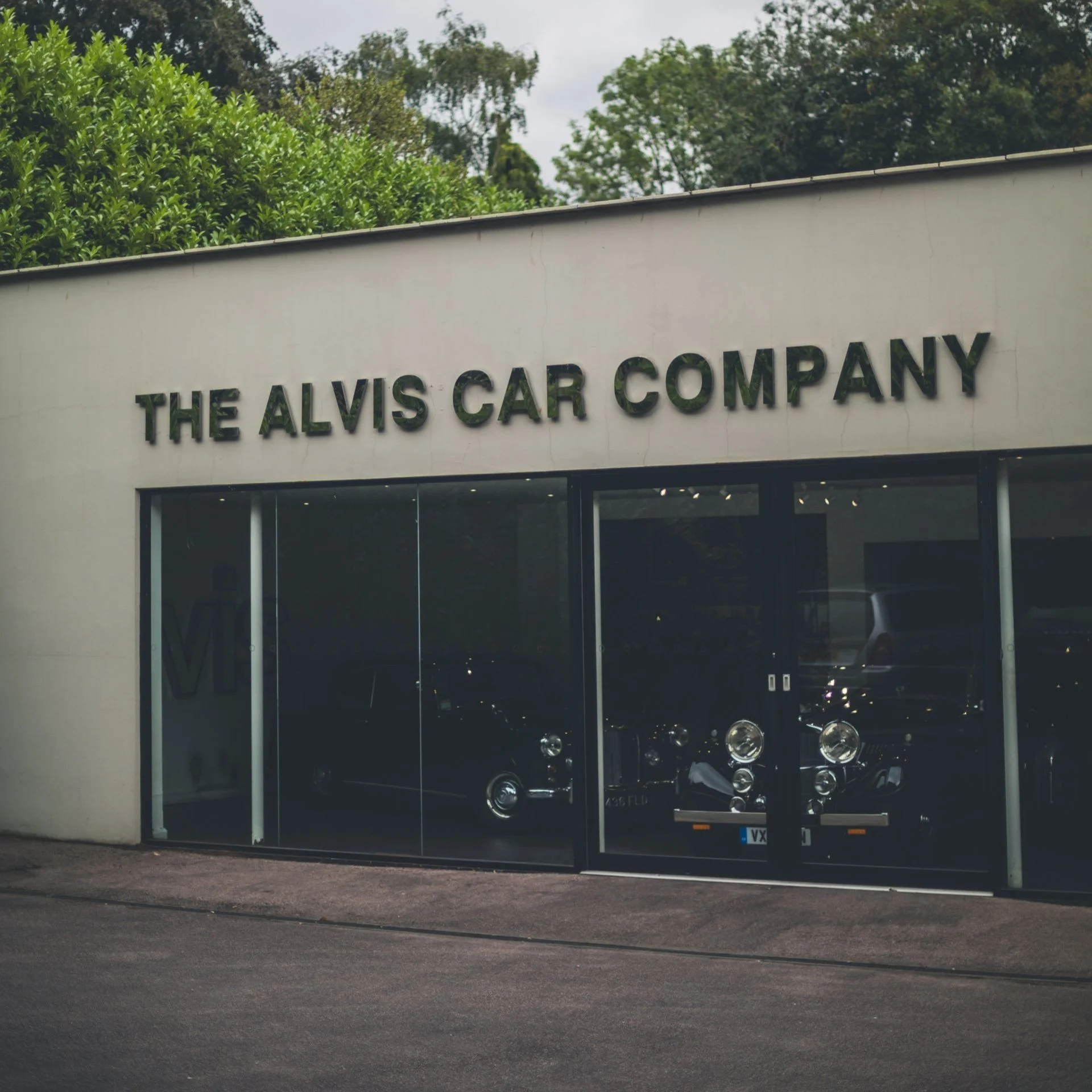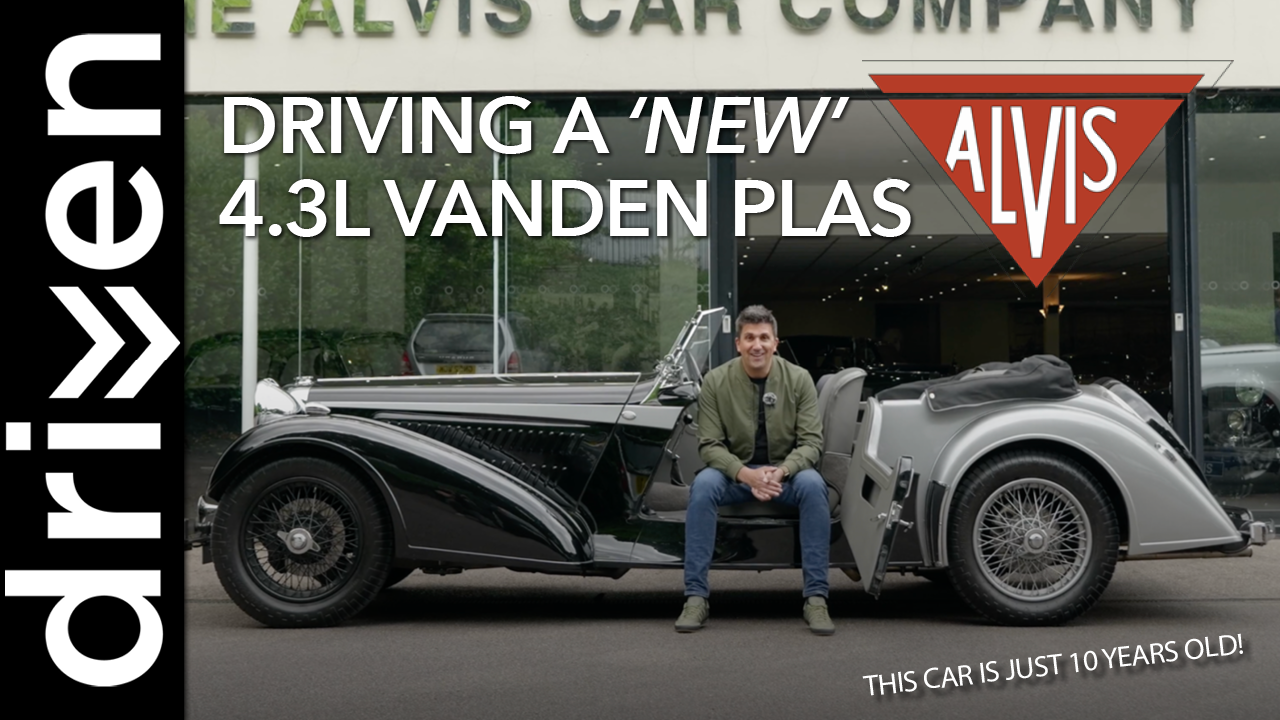Alvis 4.3L Vanden Plas Tourer
I'll start by granting you a rare glimpse into the often unspoken process of booking cars and motorcycles to test. It usually involves contacting a press office, asking about the availability of the particular model one hopes to test, sharing an overview and basis of a review with the press officer and then working out matching available dates with a final prayer for decent weather for the duration of the loan. The process is often easy, the wait is short, and the weather is kind for at least a few days in a week-long loan. What is almost always consistent, though, is the requirement for the journalist to reach out to the press office and apply for the car. Every once in a blue moon, though, a manufacturer will contact a journalist with an offer of a drive. This process is far from conventional but is a rare treat, and when I got such a call from the PR team looking after The Alvis Car Company, the car I'd have to test would be equally lacking in convention compared to my more usual reviews.
A week or two following a polite exchange of emails, I find myself standing outside the modern-day HQ for the Alvis car company showroom in Kenilworth, Warwickshire. Below the polished chrome 'Alvis Car Company' signage is a sizeable double-breasted glass sliding door, typical of car showrooms up and down the country. The car I've been invited to drive is on the other side of the glass sliding doors, and I find myself peering through at it like a curious child.
Almost immediately, I'm met by the business owner Alan Stote, and shortly after, we're joined by Callum, one of the engineers for Alvis. After some pleasant conversation, I assisted Callum by sliding open the doors to reveal the remarkable Alvis 4.3L Vanden Plas. Callum hops in and fires up the engine, bringing the car to life. With a smooth chug and characterful roar, all 10ft and 4 inches of the 1930s tourer rolls out of the showroom and onto the showroom forecourt.
To further demonstrate the non-conventional aspect of my day ahead, I should explain that press cars are typically delivered by a driver with little more interaction than offering guidance or occasionally a lift to get to the nearest train station. In some cases, press cars need to be collected from an office. Either way, the process is often simple and unnotable with an obligatory friendly smile, some polite chat, a signature on some insurance documents and the handover of keys - it's rarely 'an event' in any sense. Yet, within just 10 minutes of arriving at The Alvis Car Company, I feel like I'm about to experience something unforgettable.
From 10 paces back, the Alvis I'm about to drive would easily be identifiable as an immaculate pre-war 1930s car. A car that has likely spent much of its life in a garage or museum. If it's not been dry stored, it's undoubtedly been restored from end to end. After all, it looks almost brand new.
A few paces toward the car and a more detailed examination identify a few clues as to why the car's condition is so good and why it looks so clean and new. Some hints are subtle, such as the barely noticeable LED-converted headlamp bulbs. Others, such as the LED front indicators and side repeaters, might trigger a few puzzled expressions and one clue, particularly the 2013 registration plate, is likely to give the game away.
This particular Alvis is a 2013 continuation model of a 4.3L Vanden Plas -an elegant grand tourer initially built and sold by the Alvis car company in 1936. This model is just one of 25 continuation models to be produced by Alvis cars in Kenilworth, and the car's building process is as remarkable as the final product.
Now that the car is out of the showroom, I'm able to have a closer look at the details. Callum, the engineer, shares his intricate insight into the vehicle, walking and talking me through some of the many features shared with the 1936 version and the newer parts that make the car drivable and compliant to use - and crucially - be sold and used on the road in the 21st century. In place of the original drum brakes are disks front and back. The 1936 car was fulled via carburettors with the air and fuel mixture managed by steering wheel levers, but the 2013 model uses direct fuel injection, allowing for greater reliability and performance. Despite its modern-day attributes, the engine is built using parts and plans from the 1930s, enabling the 4,387cc straight-six engine block to be identical to the original 1930s cars. In place of the original four-speed synchromesh gearbox is a modern-day six-speed box which grants easier usability and driving comfort.
The styling and underpinnings of the car are identical to the 1936 specification. The chassis, timber framework and aluminium body panels are constructed, shaped, assembled and finished following only the original engineering plans, which in itself details just one of the many attributes of Alvis' desire to build its continuation cars correctly and by the book.
I've not even sat in it yet, and I'm in awe of the car. The detail, the finish and the commitment to preserving the design and engineering heritage are superb.
Alvis 4.3L Vanden Plas - Vital Statistics
The engine is a petrol-powered 4387cc naturally aspirated 6-cylinder (Inline) with a 6-speed manual gearbox. The drivetrain produces 150 BHP and 245 ft-lbs of torque with 0-60mph acceleration of around 10 seconds and a top speed of 110mph.
Sat in the driver's seat with Callum in the passenger seat beside me, I'm finally ready to experience modern-day 1930s motoring. It's perhaps worth noting that I'm no stranger to pre-war cars - I've driven a fair few, yet before I turned the key, I noticed several features that indicate the modern-day version of the car would be welcoming to almost any driver, regardless of experience. A 12-volt charging port is within reach, ready to charge a mobile phone or power a sat nav unit. Three-point seatbelts weren't invented in 1936, yet I clipped the belt as in any other car from 2013. The clocks display their original 1930s facias and needles but are all electronically controlled, allowing for accurate readouts whilst retaining authentic styling.
The real romance starts when turning the key. Starting most modern-day press cars is rarely an event any more. As we hurtle toward a world of electric vehicles, many journalists consider an engine of any variety a blessing. Turning the key on the Alvis is more than starting a machine. It feels as if you're bringing the car to life. This characterful experience is exclusive to classic and vintage cars. As the driver, it grants you not only the joy of awakening such a creature but also the responsibility of keeping it alive. Historically, there would be an additional task of maintaining and managing the fuel mixture with the levers on the hub of the steering wheel, but thanks to Alvis' fuel injection system, the car's engine management system governs this, leaving you with just one unenviable task: enjoyment.
Clutch in, gear selector to first and a couple of reassuring blips to the throttle before finding the biting point all add to the building atmosphere. Thanks to pre-war-car muscle memory, I expect a clatter or crunch when engaging a gear. I'm also ready for an alarmingly heavy clutch and stiff throttle peddle, too - yet none of the concerns need addressing. Thanks to the modern-day 6-speed box, there is no crunch into gear, the clutch peddle feels surprisingly light, and the throttle is precise and intuitive. A modern-day steering rack replaces the original steering box, comparable to that seen on larger trucks and agricultural vehicles in the 30s, with the modern-day upgrade granting a lighter steering feel and slightly more precise handling once moving.
Less than 50 metres out of the main gates and onto the streets of Kenilworth, I feel immediately at home in the Alvis. Accelerating under load sounds fabulous, with the unmistakable grunt of the 6-pot engine up ahead. There's a simultaneous grunt and thrash - almost like a battle between the intake up front and the exhaust behind. As the driver, you're sandwiched between the two, which with some additional wind in your hair, brings an increasingly rare dimension to driving. Shifting up through the gears is a delight, and down with the assistance of some optional heal and toe is joyous.
Despite the modern-day comforts, driving the Vanden Plas feels as engaging and special as it would be in an authentic 1936 car. Thanks to the modern conveniences, it's more enjoyable with less to concentrate on. Thanks to the servo-operated disk brakes, bringing the 3-metre-long tourer to a stop is reassuring and perhaps the most significant luxury compared to other pre-war vehicles I've driven.
Despite the atmosphere that comes with the Alvis, driving and conversing with Callum in the passenger seat was an ease. The attention from other road users and their access to chat, thanks to the low-slung doors and the folded-away roof, is something all drivers must expect and get used to - this is certainly not a car for the introverted driver.
Whilst thundering along the country lanes of Warwickshire, I'm reminded of how lucky I am to be in situations like this and how much of a treat it is to drive a car that offers such genuine engagement. I get great enjoyment from all press cars and bikes I test but rarely am I left with a feeling of true joy from driving modern cars. By all accounts, the 2013 4.3L Alvis Vanden Plas is a modern car, and yet convincing my brain to think of it as anything other than a 1936 sports tourer was near impossible. The connection felt between man and machine is an ever-increasing rarity and one that some modern-day manufacturers spend millions trying to create. Yet here in the 21st century, Alvis has achieved it with the simplest solution: dusting off the engineering plans from a time when connecting man and machine was less of an engineered experience and more of a necessity.
On my final drive back to Alvis HQ, I found myself doing what I often do when testing a car I've genuinely enjoyed - creating an imaginary specification of paint, leather trim, and dashboard veneers. With a starting price of £325,000, the Alvis continuation models do not come cheap, and it will remain nothing more than a dream for me. Still, assuming you have the means and the desire for a modern-day take on a 1936 Tourer, I'm relatively sure that even a short test drive in a continuation Alvis will result in even the most frugal car collector immediately envisaging a place for it in a collection of cars. It wouldn't be a daily driver nor a commuter car, but it would be the car to put a smile on your face - and, by proxy, every other road user around you.
It's possibly the least conventional press drive of the year - yet easily one of the most enjoyable.
Words: John Marcar
Pictures: Henry Faulkner-Smith
Special thanks to Elan PR
Enjoy More Alvis Content Here: A Day at The Alvis Car Company























